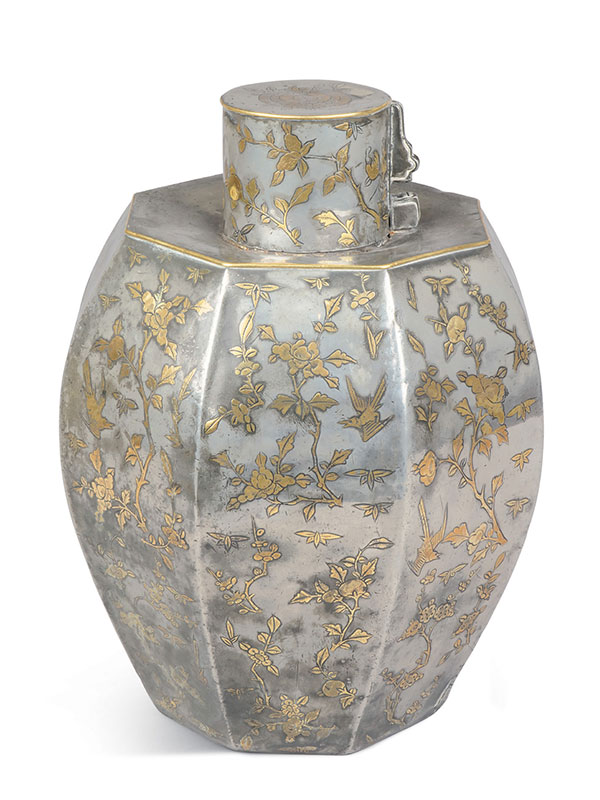Pewter and gilt tea canister
A pewter tea canister of octagonal section, the sides rising from a flat base and bulging outwards, before tapering towards a flat shoulder. The circular mouth is fitted with a double lid with a flange to one side, enabling it to be locked. The eight side panels and the side of the cover are engraved and gilded with flowering peonies, prunes and peaches on branches, birds and butterflies. The top of the lid has a pattern of overlapping petals.
This canister was made to contain tealeaves and the lockable double lid shows that the contents were considered precious and valuable at the time. Canisters such as this example were frequently exported to Europe; as Jenyns and Watson have pointed out, “The use of pewter was largely confined to utilitarian vessels and boxes of which certain tea-caddies […] became well-known in Europe in the 18th century.”[1] The gilded, engraved decoration seen on the present piece is
typical of that on pewter pieces; it stylistically resembles two tea-caddies in the Maertens de Noordhout collection.[2]
- R. Soame Jenyns and W. Watson: Chinese Art Vol. II, 1963, p. 74.
- H. Maetrens de Noordhout: Etains de Chine, Collection Ena et Henry Maertens de Noordhout, Musée Royale de Mariemont, 1994, nos. 10 and 11, pp. 36-39

